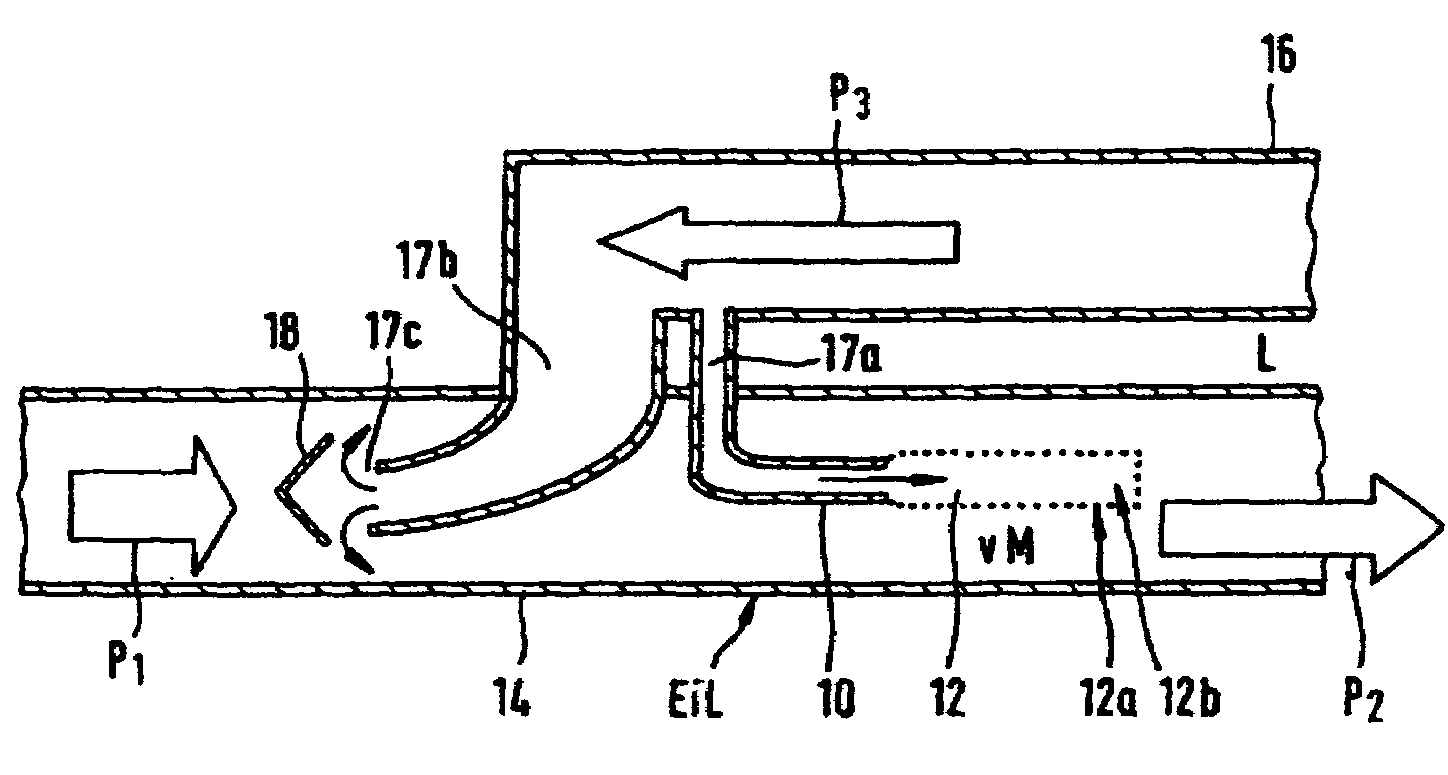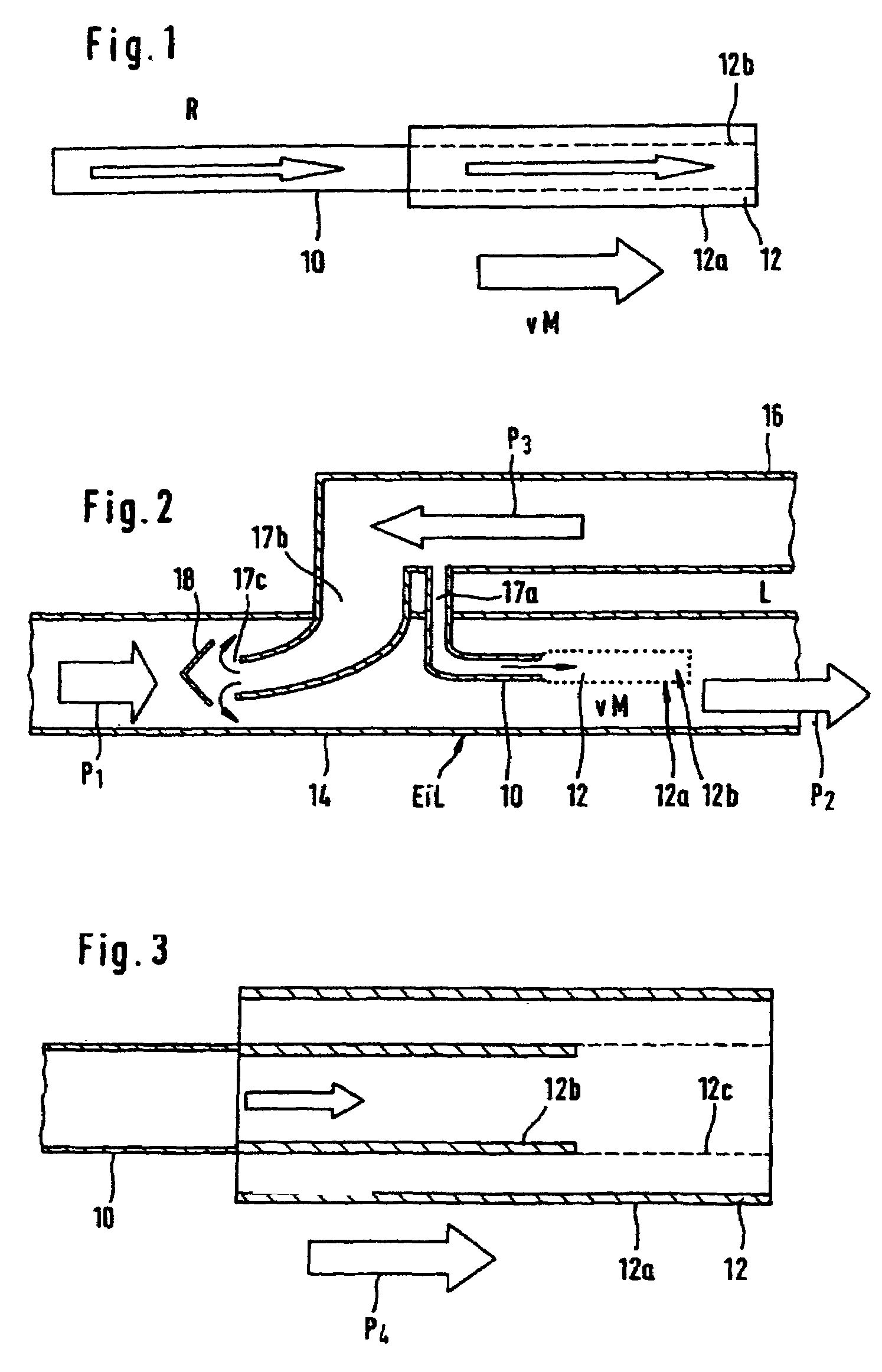Device for determining the exhaust gas recirculation rate of an internal combustion engine
a technology for internal combustion engines and exhaust gas, which is applied in the direction of electric control, combustion-air/fuel-air treatment, instruments, etc., can solve the problems of planar sensor failure, conventional planar sensors embedded in gas tight manners in suitable holders, etc., to detect changes in gas concentrations significantly faster, avoid crack formation, and high mechanical stability
- Summary
- Abstract
- Description
- Claims
- Application Information
AI Technical Summary
Benefits of technology
Problems solved by technology
Method used
Image
Examples
Embodiment Construction
[0021]With reference to FIG. 1, there is shown a tubular sensor unit 12 which has been applied to a feed pipe 10. The outer side of the sensor unit 12 is designed as the outer electrode 12a or first sensor, and the inner side is designed as an inner electrode 12b or second sensor. The respective electrodes are applied to a selectively ion-conducting material. An evaluation unit which is operatively connected to the sensor unit 12 through the sensors 12a, 12b thereof is not illustrated.
[0022]The membranes which have been applied to the inner and outer sides (12a, 12b) are selectively conductive with respect to an ionised gas which is present in the atmospheres which are to be considered, as will now be explained in more detail with reference to FIG. 2.
[0023]In FIG. 2, an intake line or manifold in which the sensor unit according to the present invention is arranged is denoted by 14. Arrow P1 indicates that fresh air enters the manifold 14 (from the left in the illustration shown in F...
PUM
 Login to View More
Login to View More Abstract
Description
Claims
Application Information
 Login to View More
Login to View More - R&D
- Intellectual Property
- Life Sciences
- Materials
- Tech Scout
- Unparalleled Data Quality
- Higher Quality Content
- 60% Fewer Hallucinations
Browse by: Latest US Patents, China's latest patents, Technical Efficacy Thesaurus, Application Domain, Technology Topic, Popular Technical Reports.
© 2025 PatSnap. All rights reserved.Legal|Privacy policy|Modern Slavery Act Transparency Statement|Sitemap|About US| Contact US: help@patsnap.com


